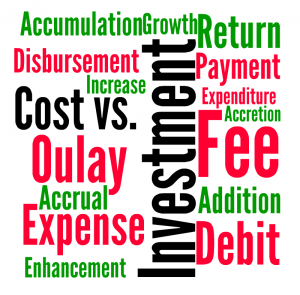Collection Technology is not an Expense, it is an Investment
Talk to a few collection agency owners. How do they measure success? Usually it is based on the number of collectors they have. How about revenue per collector? That is a metric that is hardly ever discussed. Why? What about looking at the advantages of different collection technology? What is the question that is first asked? How much?

The collection industry needs to look at technology as an investment. When we evaluate it as a cost, we consider :
One-time software costs
- Conversion and set up costs and
- Annual maintenance
Usually, you add up those costs and say, “That’s a lot of money, considering I’ve already spent a great deal on money on my present system. It’s paid for!” That is the expense approach. With 30 people, you are spending close to a million dollars a year on salaries. That is a recurring cost, and an increasing one that has nothing to do with what you have spent on your system.
What does your present technology really cost?
If you have programming staff, you must add the cost of those people to your annual expenses
- If your collection system calls for 3 hours a month of system downtime or maintenance during regular working hours, this must be considered as an expense
- In many collection companies, the ratio of clerical people to collectors is high. This is because the lack of true automation calls for increased manual work. If new software can change that, it means you save on expenses
- What do you get for the software maintenance you pay? How much of those costs go towards serious product enhancements? This can be a significant cost in terms of opportunity costs
- How much work do supervisors do, that can potentially be done by better collection software?
- To provide excellent service to consumers and clients. how many minutes do your collectors spend working an account? Could better software reduce that time? Did you know that saving a minute per account, with only 30 collectors, translates to $350,000 of wasted resource per year?
- Does your software automatically present the right account to the right person, with the right phone number, at the right time? If you have to control this manually, you are making mistakes, and the costs are far from trivial.
As you can see, the initial cost of collection software is probably a fraction of your total cost, which is usually described as the true “cost of ownership”. You can not ignore these large, recurring costs when you add up your expenses. The collection industry is changing its thinking as younger, management-oriented thinkers take over traditional leadership roles. Many of these companies are today working smarter, as opposed to harder. They are realizing that collection technology is not an expense, but should be looked upon as an important investment. In reality, compared to the never-ending and increasing cost of people, replacing your technology comes with a comparatively small price tag. To make this discussion completely balanced, we must point out that there are intangibles that must be considered in the cost of technology change. What about the cost of retraining, data conversion, lost productivity or unexpected problems? Fortunately, these are one-time costs, and with proper planning, their impact can be minimized.
In collections, bigger is often better. Some clients will not place with smaller companies. Fortunately, computer technology is a great equalizer, allowing smaller companies to compete successfully with larger, often inefficient larger competitors. But it all starts with your approach to technology. Collection technology is the heart of a collection operation. It is a basic requirement and the most important investment you will ever make.
